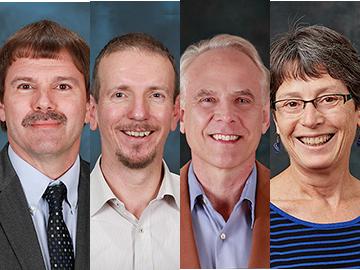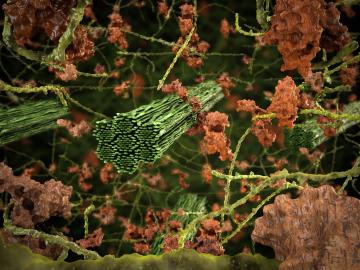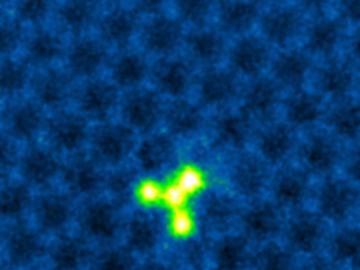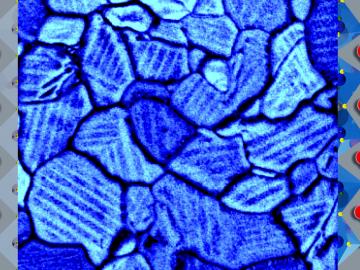Filter News
Area of Research
- (-) Materials (67)
- Advanced Manufacturing (9)
- Biological Systems (2)
- Biology and Environment (41)
- Building Technologies (3)
- Clean Energy (117)
- Climate and Environmental Systems (2)
- Computational Biology (2)
- Computational Engineering (2)
- Computer Science (4)
- Electricity and Smart Grid (1)
- Energy Frontier Research Centers (1)
- Fossil Energy (1)
- Fuel Cycle Science and Technology (1)
- Fusion and Fission (14)
- Fusion Energy (2)
- Isotopes (12)
- Materials for Computing (18)
- Mathematics (1)
- National Security (9)
- Neutron Science (42)
- Nuclear Science and Technology (15)
- Nuclear Systems Modeling, Simulation and Validation (1)
- Quantum information Science (3)
- Sensors and Controls (3)
- Supercomputing (44)
- Transportation Systems (1)
News Topics
- 3-D Printing/Advanced Manufacturing (4)
- Artificial Intelligence (1)
- Bioenergy (2)
- Biology (1)
- Biomedical (3)
- Chemical Sciences (2)
- Climate Change (1)
- Composites (3)
- Computer Science (3)
- Critical Materials (1)
- Cybersecurity (1)
- Energy Storage (2)
- Frontier (1)
- Fusion (2)
- Grid (1)
- Isotopes (6)
- ITER (1)
- Materials (7)
- Materials Science (12)
- Microscopy (9)
- Nanotechnology (12)
- Neutron Science (6)
- Nuclear Energy (2)
- Physics (5)
- Polymers (4)
- Quantum Computing (1)
- Quantum Science (2)
- Space Exploration (2)
- Transportation (1)
Media Contacts

Four researchers at the Department of Energy’s Oak Ridge National Laboratory have been elected fellows of the American Association for the Advancement of Science (AAAS). The AAAS is the world’s largest multidisciplinary scientific society and publisher of the Sci...

Leah Broussard, a physicist at the Department of Energy’s Oak Ridge National Laboratory, has so much fun exploring the neutron that she alternates between calling it her “laboratory” and “playground” for understanding the universe. “The neutron is special,” she said of the sub...

Seven researchers from the Department of Energy’s Oak Ridge National Laboratory have been chosen by the Innovative and Novel Computational Impact on Theory and Experiment, also known as INCITE, program to lead scientific investigations that require the nation’s mo...

Carbon fiber composites—lightweight and strong—are great structural materials for automobiles, aircraft and other transportation vehicles. They consist of a polymer matrix, such as epoxy, into which reinforcing carbon fibers have been embedded. Because of differences in the mecha...
Physicists turned to the “doubly magic” tin isotope Sn-132, colliding it with a target at Oak Ridge National Laboratory to assess its properties as it lost a neutron to become Sn-131.

Three researchers from the Department of Energy’s Oak Ridge National Laboratory have been elected fellows of the American Physical Society (APS). Fellows of the APS are recognized for their exceptional contributions to the physics enterprise in outstanding resear...

Scientists at the Department of Energy’s Oak Ridge National Laboratory used neutrons, isotopes and simulations to “see” the atomic structure of a saturated solution and found evidence supporting one of two competing hypotheses about how ions come



A unique combination of imaging tools and atomic-level simulations has allowed a team led by the Department of Energy’s Oak Ridge National Laboratory to solve a longstanding debate about the properties of a promising material that can harvest energy from light. Th...




